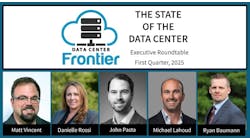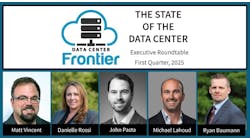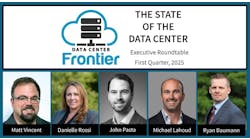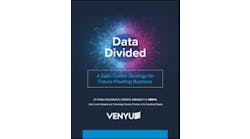The Data Center Frontier Executive Roundtable features insights from industry executives with lengthy experience in the data center industry. Here’s a look at the insights from Matt Zieg, VP of Global Strategic Accounts for Vertiv.
Matt Zieg manages a team of key account and business development executives that focus on engaging the most influential companies of the digital economy, helping them achieve their aggressive data center infrastructure growth initiatives in the most efficient and cost-effective manner. Matt has been a part of the data center industry for more than 20 years. He is a graduate of Ohio University.
Here's the full text of Matt Zieg's insights for our Executive Roundtable:
Data Center Frontier: As data center builds and leasing in locations such as No. Va. And Silicon Valley remain increasingly challenged, the prognosis for industry growth in 2nd and 3rd tier U.S. data center markets continues to improve. What are your top 3 most attractive 2nd or 3rd tier data center markets in terms of power, cost, construction, operational, geographic or other advantages?
Matt Zieg, Vertiv: As the distribution of compute becomes more important, we can expect to see significant growth in second- and third-tier data center markets. Power and land are major drivers for growth, so an area where power and land are abundant will likely provide a more cost-effective option on which to build data centers. That’s why we’re seeing a lot of new construction in the Pacific Northwest, particularly in central Washington and Hillsboro, Oregon, because the land and power is relatively inexpensive with strong connectivity.
Salt Lake City is another emerging market because of the high-speed fiber optic lines that run through the region and its relatively inexpensive land and power, compared to Northern Virginia, Silicon Valley or any of the other major markets. We’re also seeing more growth in regions that border some of the major markets. For example, there’s been increased construction in such central Texas cities as Austin and San Antonio, based on access to abundant land and energy, strong connectivity, and proximity to major metropolitan areas.
Despite the advantages of inexpensive land and power, building outside primary markets carries some risk. Construction of the data center could be more expensive because the builders are bringing more labor and materials from outside the region. Additionally, if you’re building in remote areas, you may run into the challenge of attracting skilled IT professionals willing to relocate to the area to support the data center’s day-to-day operations.
Data Center Frontier: Given the rapid acceleration of AI technology momentum this year, what’s your 12-24 month outlook for planning or spending by hyperscale and colocation providers on any type of data center AI technology upgrades related to workload management and demand uptake from enterprise and consumer cloud customers?
Matt Zieg, Vertiv: High-performance compute-intensive applications like AI will require a significant increase in IT investment, and that investment will be more distributed in nature to get the compute capacity closer to where the information is consumed.
The rise of AI and other high-performance computing applications will likely lead to higher spending on thermal and power infrastructure to support these applications.
Data Center Frontier: The Russian author Leo Tolstoy once famously wrote, "Happy families are all alike; every unhappy family is unhappy in its own way." Across the spectrum of colocation and hyperscale data center construction, expansion and operations, there’s a plurality of investors, builders and providers. What does each party optimally look for in the other to ensure a ‘happy family’? On the flip side, what factors could make for an ‘unhappy family?’
Matt Zieg, Vertiv: The investors need to put money into projects that will generate ROI; the builders want to build in a way that is as cost-effective and as close to project schedules as possible, and the providers are looking to get the maximum amount of lease revenue from their customer to optimize their profitability.
The relationship between all these parties is straightforward. Investors don’t get a return on their investment until the data center is built and then turned over to the provider, so the provider can bring in customers and begin leasing out the space.
This relationship is all about when the money enters and exits the funnel.
So, if the investors aren't making the return they expected in the timeline they anticipated, they're not going to be happy. And if these things aren’t happening, it likely means the construction team hasn’t met its schedules, which means the providers aren’t happy because they can’t start collecting lease revenue.
It’s all about proper scheduling and being able to collect revenue at rates that generate a good return for the investors.
For equipment providers - in addition to industry expertise, engineering support, technology features, breadth of portfolio, and service organization - we need to be able to deliver our equipment on time and at a competitive price, as well as doing anything else that might help the customer speed up their construction timelines.
On the infrastructure equipment side, one way we might speed the process is by offering a prefabricated modular solution that is factory-tested, which reduces time, labor and risks associated with assembling that same system onsite.
Ultimately, if all parties execute as planned – with no changes, surprises or costly delays - the data center build is on time and on budget and there’s lease revenue coming in. That helps to ensure a “happy family.”
Keep pace with the fast-moving world of data centers and cloud computing by connecting with Data Center Frontier on LinkedIn, following us on X/Twitter and Facebook, and signing up for our weekly newsletters using the form below.

Matt Vincent
A B2B technology journalist and editor with more than two decades of experience, Matt Vincent is Editor in Chief of Data Center Frontier.






